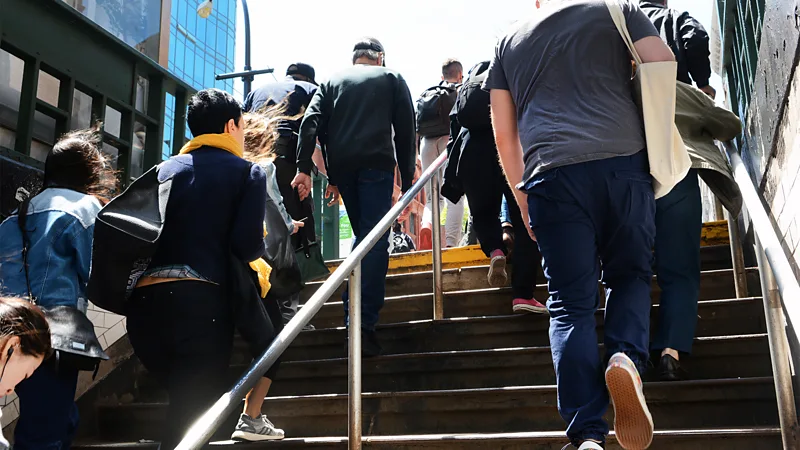Migrants increasingly drawn to Spain's Canary Islands

In the bars of the La Frontera municipality, the second largest town on the island of El Hierro, the phrase "Que lleguen bien," meaning "may they arrive safely,"echoes through the walls.
Located at the southwestern tip of the Canary Islands archipelago, seven islands belonging to Spain, El Hierro has been a regular choice destination for African migrants.
Francis Mendoza, the coordinator of the Corazon Naranja group of Civil Protection volunteers, sips a beer in Winnit bar, on the well-known Tigaday Street. Mendoza is accompanied by Omar, a young man from Gambia, and Aliu, of Senegalese origin. They are closely monitoring the arrivals of the cayucos, the boats carrying migrants.
Figures from the Spanish Interior Ministry show that in 2023, at least 14,535 people arrived on El Hierro in 154 boats. That's equivalent to an average of 40 people daily on an island with an area of 278 square kilometers (108 square miles), and home to around 12,000 inhabitants.
More arrivals expected in September
Boat arrivals have continued to increase in 2024, with the numbers showing an average of 45 people each day. The island's residents, known as Herrenos, told DW they expect a further increase in the number of people arriving in September.
In just 10 days in August, 1,007 people arrived on the island. Among the migrants were people from Senegal, Mauritania, Gambia, Mali, Guinea, Pakistan and Bangladesh.
Juan Miguel Padron Brito is the mayor of the municipality of El Pinar and remembers those chaotic times when the small Atlantic island had to face the massive arrival of migrants for the first time.
"There were people who complained, with good reason, because there were, for example, three of us in the room to be attended by the doctors in the health center, a migrant boat arrived and all the health workers moved to attend it and the three of us were left without health services," Brito told DW.
However, El Hierro is an oasis of solidarity in a Europe that is becoming increasingly closed and hostile toward migrants searching for a better life and future.
"The sea is very calm. It's very strange," said Mendoza. "I only hope they arrive safely," he added with concern.
In El Hierro, most people are welcoming; some even offer a space in their homes to care for those who have arrived. Migrants generally spend around five days in El Hierro before they are transferred to main island of Tenerife, further east.
A new life on the island
"Here we are fine and happy. We want to stay on the island," Abdu told DW. He arrived from Senegal 11 months ago and is now a community member.
Teseida, a mother of two boys, and her husband arrived 11 months ago from Senegal with other family members. They raised enough money to buy a boat and set sail into the uncertainty of the sea.
On disembarking, the Spanish police accused the father of the minors of being the "patron" of the boat, which makes him liable for the crime of human trafficking for profit.
Whenever a migrant boat arrives, the authorities look for someone responsible, even if, in this case, he was not a smuggler. Now, he is being held in prison in Tenerife, awaiting trial.
Every month, Teseida takes the children to the neighboring island to visit their father, as she considers it essential for the boys to have contact with him.

Registering and verifying migrants
Omar, a young Gambian, arrived in a boat from Senegal 12 months ago as a minor. However, bone tests determined he was an adult, so he was forced to leave the center.
Luckily for him, Mendoza, head of the Civil Protection volunteers, gave him a place of refuge. Today, the young man works as a volunteer in the Corazon Naranja group, which helps migrants, and is trying to build a normal life.
"We are all very attached to Omar, especially in my group," said Mendoza. "We took him in when he arrived on the island a year ago. Since then, we have created a very strong relationship with him."
Migrants helping migrants
Omar now assists in the reception of new migrants arriving on the island. He takes care of the new arrivals with his colleagues as they enter the temporary center for foreigners, under the watch of the National Police. The center is responsible for carrying out registration and identification procedures for people who enter the country irregularly.
Local sources in El Hierro believe at least 75,000 people are expected to try to reach Europe through the Canary Islands route between September and October.
Faced with the imminent increase in the number of boats arriving on the small island, one wonders whether the solidarity of the locals has a limit or is inexhaustible.
"No, no, in El Hierro, that doesn't happen," said Mendoza. Though island residents "may be tired, out of breath," he said that they "will be giving everything to help [migrants]."
Source : DW
Source : DW

























































